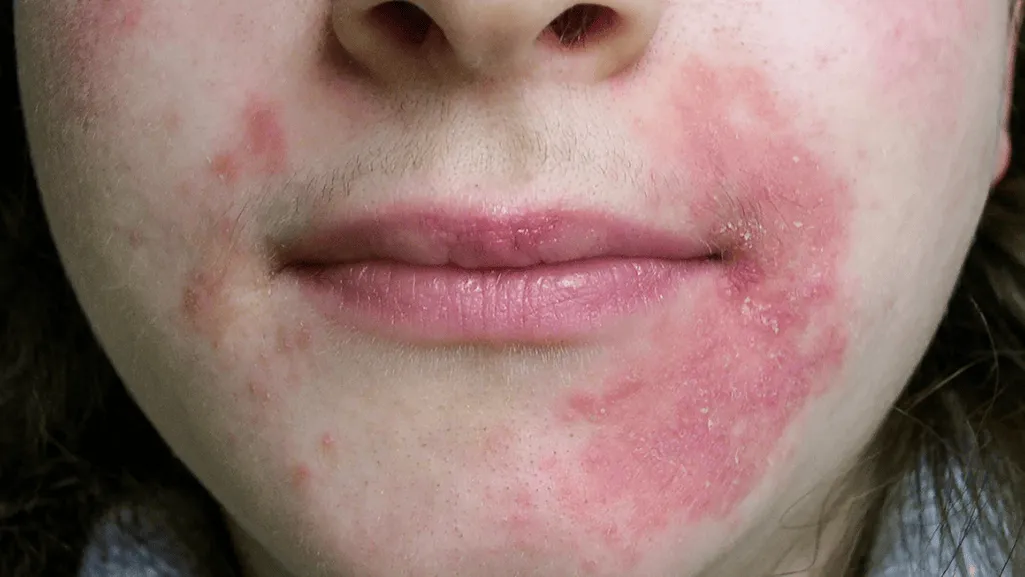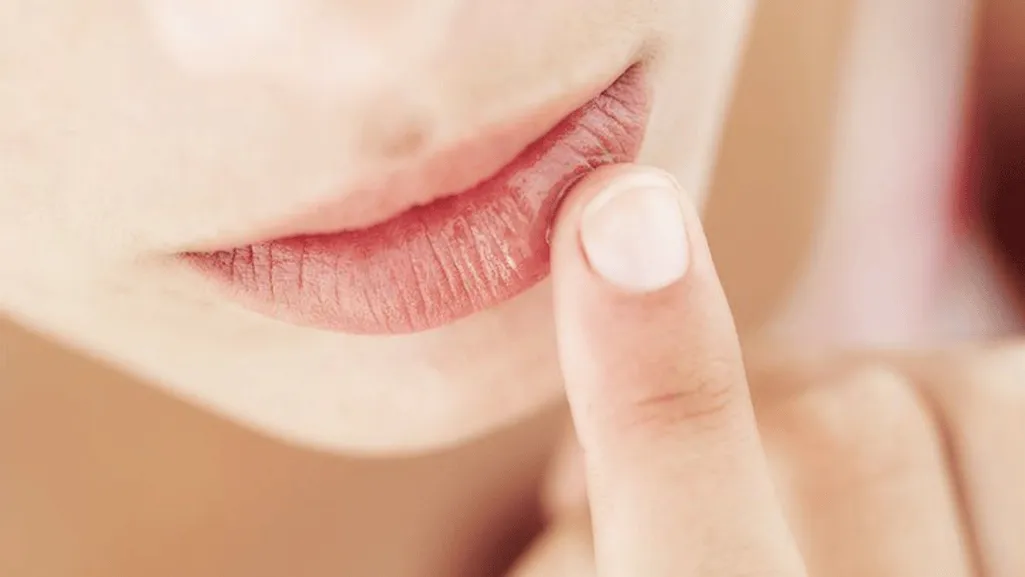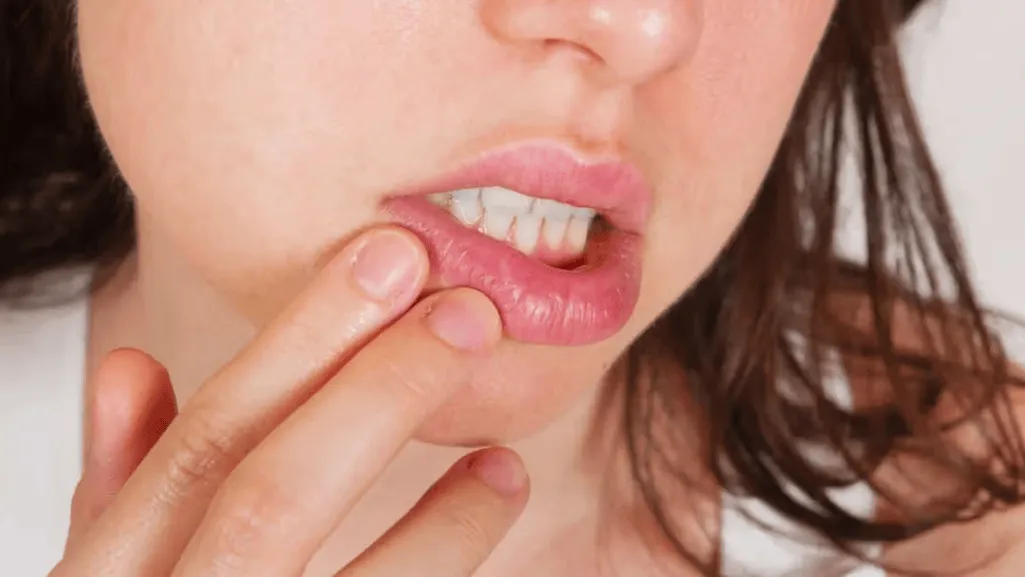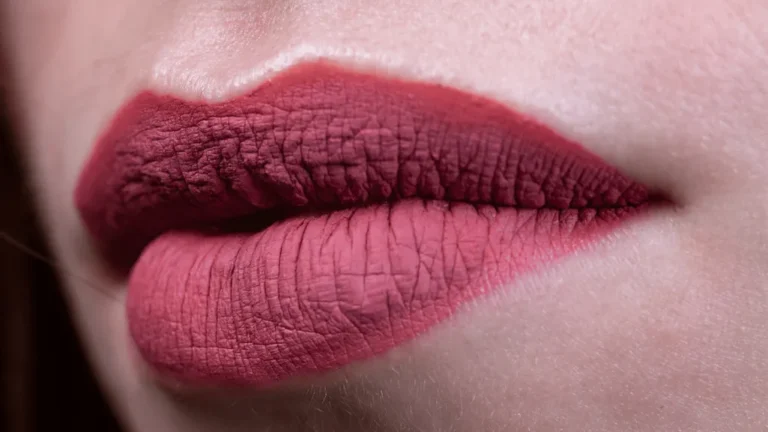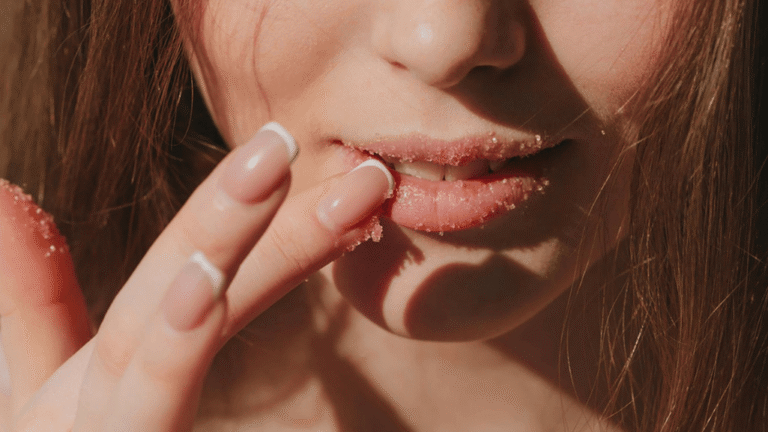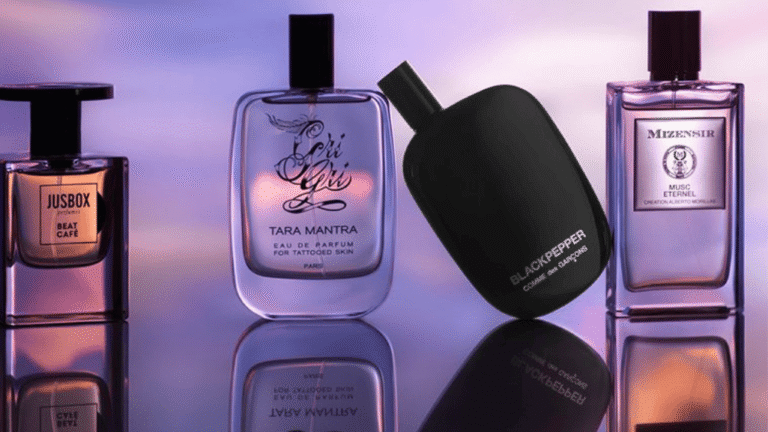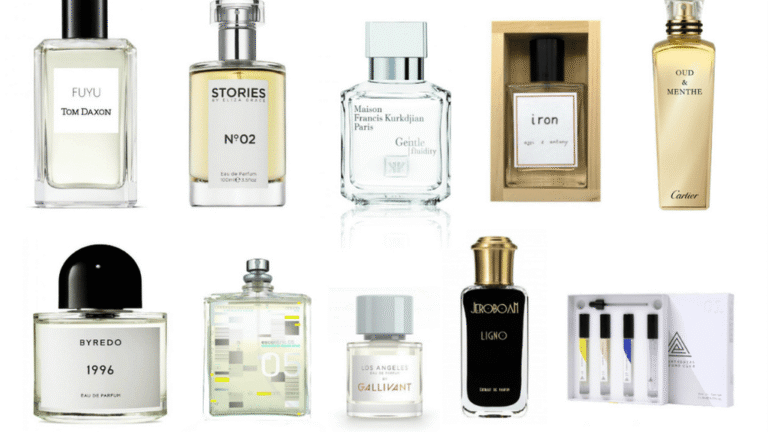Allergic reaction on lips: how to spot, treat, and prevent bumps Do you have bumps, redness, or itching on your lips? These can be signs of an allergic reaction on the lips. Common causes include food (nuts, shellfish), fragrances or preservatives in lip products, and environmental allergens. This guide explains the key symptoms to watch for, immediate steps you can take at home, and when to see a doctor.
A simple daily lip care routine — using a fragrance-free balm, avoiding known irritants, and protecting lips from harsh weather — can help reduce reactions and keep your lips comfortable. For mild symptoms, over-the-counter options and self-care often help; for severe or rapidly worsening swelling, get emergency care right away.
Key Takeaways
- Spot symptoms early: redness, itching, small bumps, or dry, peeling skin around the lips.
- Common allergens include foods (nuts, shellfish), fragrance/flavor in lip products, preservatives, and metals in cosmetics.
- Start with self-care: cool compresses, fragrance-free lip balm, and short-term oral antihistamines for mild reactions; avoid the suspected allergen.
- See a doctor if symptoms worsen, spreading swelling occurs, breathing becomes difficult, or symptoms don’t improve with home care.
Emergency warningIf you have rapid lip swelling, throat tightness, difficulty breathing, dizziness, or a rapidly spreading rash — treat this as a possible anaphylactic reaction. Call emergency services immediately and, if available, use an epinephrine autoinjector while help is on the way.
- If unsure which product caused the reaction, stop using recent lip products and keep them for review or testing by a healthcare provider.
Introduction to Allergic Reactions on Lips
 Allergic reactions on the lips can range from a small, itchy patch to notable swelling. Most are caused by everyday things you touch or eat — for example, a flavored lip balm or a piece of shellfish. Knowing common symptoms and simple first steps helps you treat mild cases safely and spot when to get professional care.
Allergic reactions on the lips can range from a small, itchy patch to notable swelling. Most are caused by everyday things you touch or eat — for example, a flavored lip balm or a piece of shellfish. Knowing common symptoms and simple first steps helps you treat mild cases safely and spot when to get professional care.
Mild reactions usually improve with at-home care: a cool compress (10–15 minutes), stopping the suspected product, and applying a fragrance-free lip balm. Over-the-counter oral antihistamine can help reduce itching and hives for many people — follow the product directions and check with a healthcare provider if you have questions.
Video: practical tips for soothing lip allergic reactions (verify with your healthcare provider for medical advice).
- Home Remedies: Cool compresses (10–15 minutes), gentle fragrance-free balm, and short-term oral antihistamines can help reduce swelling and itching.
- Medical Interventions: If swelling is severe, persistent, or you develop breathing problems, seek immediate care — a doctor may prescribe stronger medicines or refer you to an allergist.
If you have recurrent episodes, or you suspect a particular lip product or food is the trigger, keep a short diary of symptoms and exposures and talk with your doctor about testing options (patch testing or allergy testing) to identify specific allergic reactions.
Identifying Allergic Reaction Bumps on Lips
Recognizing common lip allergy symptoms helps you act quickly. Allergic reaction bumps on the lips can be mild — a little redness or itching — or more serious, with swelling or pain. Often the first clue is a new product, food, or environmental exposure in the last few hours to days.
Photo: examples of lip irritation — save clear photos to show your doctor if symptoms persist.
Common Symptoms and Presentation
- Redness, swelling, or small raised bumps on the lip surface.
- Itching, burning, or tenderness — the area may feel irritated or dry and peel.
- Less commonly, blisters may form; if they contain pus or are painful, consider infection as well as allergy and seek care.
- Red flags: rapid, spreading swelling, throat tightness, breathing problems, sudden dizziness — these require immediate emergency care.
Types of Allergic Lip Reactions
- Allergic contact cheilitis (ACC): a delayed reaction to ingredients in cosmetics, toothpaste, or dental materials; looks like eczema — dry, red, cracked lips.
- Angioedema: rapid deep swelling beneath the skin, sometimes affecting lips and throat; can be life‑threatening if airway is involved.
- Oral allergy syndrome (OAS): immediate itching/swelling of lips or mouth after eating certain raw fruits, vegetables, or nuts in people with pollen allergies.
Because infections (like cold sores or impetigo) and irritant reactions can look similar, note timing and triggers: allergic reactions often follow recent exposure to a product or food, while infections may start with pain, fever, or a single blistering lesion. If in doubt, photograph the area and share it with your clinician.
Common Allergens That Affect the Lips
 Finding the main allergens that irritate your lips is the first step to preventing recurring problems. Triggers fall into two broad groups: foods that cause immediate reactions and ingredients in products that cause contact reactions over time. Below are common examples and practical tips for avoiding them.
Finding the main allergens that irritate your lips is the first step to preventing recurring problems. Triggers fall into two broad groups: foods that cause immediate reactions and ingredients in products that cause contact reactions over time. Below are common examples and practical tips for avoiding them.
Food Allergies and Oral Allergy Syndrome
Foods commonly linked to lip reactions include nuts, shellfish, and dairy. Some people with pollen allergies get Oral Allergy Syndrome (OAS): eating certain raw fruits, vegetables, or nuts can cause immediate itching or mild swelling of the lips and mouth. Cooked forms of the same foods often don’t trigger OAS, but always follow your clinician’s guidance.
Skincare and Cosmetic Ingredients
Lip products and skincare can contain preservatives, flavorings, fragrances, and metallic pigments that cause allergic contact cheilitis. Common culprits reported in dermatology include propylene glycol, fragrances, colophony (rosin), shellac, and metallic compounds such as nickel in colored cosmetics.
Quick tips: choose fragrance-free, hypoallergenic lip products, and patch-test new items on the inside of your wrist for 48–72 hours before regular use. If you suspect a product, stop using it and save the packaging so ingredients can be reviewed.
Below is the original table listing specific ingredients commonly linked to lip reactions — use it as a checklist when reading labels. For a more mobile-friendly view, these are summarized after the table.
| Ingredient Potential Allergic Reaction Product Types | ||
| Castor Oil | Can cause lip irritation and swelling | Lipsticks, lip balms |
| Shellac | May trigger contact cheilitis | Lip gloss, long-wear lipsticks |
| Colophony (Rosin) | Might induce redness and irritation | Lipsticks, mascara |
| Fragrance / Flavor | Common cause of allergic reactions on lips | Lip balms, glosses |
| Metallic compounds (e.g., Nickel) | Known to cause allergic dermatitis | Colored cosmetics |
Mobile-friendly summary (quick checklist): avoid fragranced products, watch for propylene glycol and shellac in labels, be cautious with products listing rosins or metallic pigments, and test new lip balms on a small skin patch first. If reactions continue despite avoidance, an allergist can perform patch testing to identify the specific allergen.
When to Seek Medical Attention for Lip Swelling
If you notice your lip swelling appears suddenly or gets worse quickly, treat it seriously. Rapid swelling of the lips — especially with throat tightness, breathing difficulty, or lightheadedness — can signal anaphylaxis, a life‑threatening emergency. Call emergency services immediately if any of those red flags occur.
An immediate injection of epinephrine (adrenaline) is the first-line treatment for anaphylaxis and can be life-saving. People with a history of severe allergic reactions are often prescribed an epinephrine autoinjector (brand names vary by country). If you or someone nearby has one and you suspect anaphylaxis, use it and seek emergency care right away.
- Difficulty breathing, wheezing, or throat tightness — call emergency services and treat as possible anaphylaxis.
- Rapidly spreading swelling of the lips, face, or neck — seek urgent care.
- Worsening hives or swelling that does not improve after taking an over‑the‑counter antihistamine (follow package directions) — contact your doctor or urgent care.
- Painful, pus‑filled blisters or signs of infection around the lips — see a healthcare provider promptly for evaluation.
- Numbness, tingling, or neurological symptoms in the face — seek immediate medical attention.
Video: causes of swollen lips and treatment tips — always confirm medical recommendations with your healthcare provider.
If symptoms are not severe but do not improve after initial self-care (cool compress, stopping the suspect product, and a single dose of an OTC antihistamine), contact your doctor or an allergist for further evaluation. They can advise about epinephrine autoinjector prescriptions, testing, and longer‑term management based on the severity and pattern of your reactions.
Treatment Options for Allergic Reaction on Lips
An allergic reaction on the lips can be managed at home for mild cases, treated with over‑the‑counter (OTC) products, or managed with prescription therapies when needed. Below are clear, practical options — starting with self-care and OTC measures, then prescription choices, and when to see a specialist.
Home Remedies and Self-Care (first-line for mild cases)
- Cool compresses for 10–15 minutes to help reduce swelling and help reduce discomfort.
- Apply a fragrance‑free, hypoallergenic lip balm (petrolatum, glycerin or shea butter) to protect the lip barrier and reduce inflammation.
- Short-term avoidance of the suspected allergen (stop using the new lip product or avoid the suspected food).
- Stay hydrated and use a humidifier in dry environments to support healing.
Over-the-Counter Medications (fast symptom relief)
OTC antihistamine tablets (e.g., cetirizine, loratadine) can often help reduce itching and hives — take as directed on the package. For topical relief, low‑strength hydrocortisone cream (0.5–1%) may reduce redness and itching when used short-term on the external lip skin; avoid applying potent steroids or prolonged use on mucosal surfaces and consult a doctor if unsure.
Prescription Treatments and Therapies (when OTC not enough)
- Topical immune modulators (e.g., tacrolimus ointment) — prescribed by dermatologists for allergic contact cheilitis when steroids are unsuitable; used under medical supervision.
- Short courses of oral corticosteroids — sometimes used for severe, widespread swelling (only under direct medical care due to side effects).
- Allergen-specific therapies (e.g., sublingual immunotherapy) — may be considered for certain environmental or food allergies but are prescribed and supervised by allergists and are not first-line for contact cheilitis.
Because some prescription medications carry risks or specific indications, see a doctor before starting them. An allergist or dermatologist can confirm the cause (through testing) and choose the most appropriate topical, systemic, or desensitization treatment.
When to See a Specialist
- Recurrent or persistent lip reactions despite avoidance and OTC measures — consult an allergist or dermatologist for patch testing or targeted treatment.
- Severe or unusual reactions (frequent angioedema, need for systemic steroids) — specialist care recommended for long-term management.
In sum: start with careful home care and OTC antihistamine or short topical therapy for mild cases; escalate to prescription medications or specialist referral when symptoms are severe, recurrent, or unclear. This stepwise approach helps treat allergic reactions effectively while minimizing unnecessary medication exposure.
The Role of Immune System in Lip Allergic Reactions
Most allergic reactions of the lips reflect an immune system response: the body mistakes a harmless substance (an allergen) for a threat and mounts a reaction. That response can be immediate (IgE‑mediated) — causing quick swelling or hives — or delayed (cell‑mediated) — causing red, scaly, eczema‑like changes. Understanding which type of response you’ve had guides testing and treatment.
Understanding Angioedema
Angioedema is a rapid, deep swelling often involving the lips, eyes, or throat. It can be IgE‑mediated (allergic) or non‑allergic (drug‑induced, hereditary, or idiopathic). Because angioedema may threaten the airway, treat sudden lip swelling as a medical emergency and seek immediate care if breathing or swallowing is affected.
Factors That Increase Immune Overreactions
Genetic predisposition, prior sensitization to an allergen, high exposure levels, concurrent illnesses, and certain medications can all increase the chance of a strong immune reaction. Environmental allergens (pollen, pet dander) often cause respiratory symptoms but can also trigger lip symptoms in sensitive people, while product contact tends to produce localized contact cheilitis.
| Allergen Type Common Examples Typical Immune Response | ||
| Food | Nuts, shellfish | Immediate swelling, possible anaphylaxis |
| Lip Care Products | Certain balms, lipsticks, preservatives | Localized contact cheilitis (delayed) |
| Environmental | Pollen, pet dander | Respiratory symptoms; possible lip symptoms in sensitive people |
Clinically, distinguishing IgE‑mediated from delayed hypersensitivity (contact) is important because testing differs: skin prick or specific IgE blood tests help identify immediate food/environmental allergies, while patch testing identifies chemicals causing contact cheilitis. Ask your clinician which testing fits your history.
Preventative Measures to Avoid Allergic Reaction on Lips
Preventing allergic reactions on your lips starts with knowing common triggers and building a simple, consistent lip care routine. Small, regular steps lower the chance of contact reactions and make it easier to spot a true allergy when it happens.
Choose gentle, hypoallergenic products and read labels carefully. Avoid fragrances, flavors, and known irritants when possible — these are frequent causes of allergic reactions on the lips.
- Choose products labeled fragrance‑free, dye‑free, and hypoallergenic; avoid known triggers in ingredient lists.
- Moisturize regularly with barrier‑repair balms (petrolatum, glycerin, or shea) to keep lips healthy and less prone to irritation.
- Use a humidifier in dry climates and avoid licking or picking at lips.
- When trying a new lip product, do a patch test: apply a small amount to the inside of your forearm or behind your ear and wait 48–72 hours for signs of redness, itching, or swelling before using on the lips.
Be cautious with at‑home allergy tests: many over‑the‑counter kits lack accuracy. If you suspect a persistent allergy, ask your doctor about professional testing (patch testing for contact allergens or skin prick/IgE testing for immediate food/environmental allergies).
| Allergen Common Sources Alternative Choices | ||
| Fragrances | Lipsticks, balms | Fragrance‑free products |
| Preservatives (e.g., propylene glycol) | Lip balms, creams | Products with simple ingredients (glycerin, aloe vera) |
| Metallic salts/pigments | Colored cosmetics | Mineral‑based or organic pigments |
If you have ongoing allergies or repeated reactions, keep a short log of products and foods and discuss formal patch or skin prick testing with your healthcare provider — this is the most reliable way to pinpoint the specific substances that cause your lip reactions.
Allergic Reaction Lip Care and Management
If you have lip allergies, choosing gentle lip care products is central to both treatment and prevention. The right products soothe symptoms without adding new triggers. Below are practical guidelines for selecting and using lip care items safely.
Why mild, non‑irritating products matter
Gentle formulations reduce the risk of contact allergies and irritation. Look for products without fragrances, flavors, dyes, or common preservatives. Even natural ingredients (like certain essential oils) can trigger reactions — focus on simple, well‑tolerated ingredients and always patch test new items.
Choosing a lip balm: what to look for
Aim for hypoallergenic, fragrance‑free balms with a short ingredient list. Common soothing bases include petrolatum (very inert), shea butter, and glycerin. Note: coconut oil can be helpful for some but may cause reactions in others — test first. For flareups, a clinician may recommend a short course of a mild topical corticosteroid; do not self‑apply potent steroids to the mucosa without medical advice.
Below are example product types (not endorsements). Always check the ingredient list and patch test any new product before using on the lips.
- Simple petrolatum-based balm (fragrance‑free) — very low risk of causing an allergic reaction.
- Hypoallergenic balms with glycerin or shea butter — good for restoring lip moisture and barrier function.
- For sensitive cases, look for products labeled for sensitive skin and verify the absence of flavors, essential oils, and strong preservatives.
If you suspect a specific product is causing your symptoms, stop using it and consult your doctor or an allergist. Keep the product and packaging to help identify ingredients, and consider professional patch testing if reactions recur. In many cases, avoiding the trigger and using a simple, allergen‑free balm solves the problem.
Conclusion
We’ve covered how allergic reaction bumps on the lips can look, common causes, and the practical steps to treat and prevent them. Early recognition — knowing the symptoms and possible triggers — helps you treat mild cases at home and get medical help when needed. Simple prevention (gentle products, patch testing, avoiding known allergens) prevents many recurrences.
If you have repeated or severe reactions, talk to a doctor or allergist about formal testing (patch testing for contact allergens, or skin prick/IgE testing for immediate food/environmental allergies). Reliable testing is the best way to identify the specific substances causing your lip problems and to plan long‑term care.
- Quick checklist — what to do nowBreathing trouble or rapidly spreading swelling — call emergency services immediately (possible anaphylaxis).
- Mild redness/itching — stop the suspect product, apply a cool compress, use a fragrance‑free balm, and consider an OTC antihistamine per package directions.
- Recurrent or unclear reactions — save product packaging, keep a short log of exposures, and see an allergist for testing.
If you’d like, I can create a printable symptom checklist you can bring to your appointment, or draft a short template message to send to your doctor describing your reaction history and products used.
FAQ
What are allergic reaction bumps on lips?
Allergic reaction bumps on the lips usually appear as redness, itching, small raised bumps, or swelling. They can follow exposure to foods, lip products, or environmental allergens (pollen, pet dander). If you notice a new product or food before symptoms, record it — that helps with later testing.
How can I treat allergic reactions on my lips?
For mild reactions, try a cool compress, stop the suspected product, and apply a fragrance‑free balm. An over‑the‑counter antihistamine may reduce itching and hives (follow package directions). If symptoms persist or worsen, see a doctor — they can prescribe targeted treatment and advise testing.
What does lip swelling from an allergic reaction look like?
Swelling can range from a small puffiness to significant enlargement of the lips and nearby face. It may be itchy or tender. Severe swelling can impair speaking, eating, or breathing — treat sudden or progressing swelling as an emergency.
What are some common allergens that can cause a lip rash allergy?
Common triggers include foods (nuts, shellfish), fragrances and flavors in lip products, preservatives (like propylene glycol), rosins (colophony), shellac, and metallic pigments. Pollen and pet allergens can also lead to lip symptoms in sensitive people. Read labels and patch test new items before regular use.
When should I seek medical attention for an allergic reaction on my lips?
Seek emergency care now if you have difficulty breathing, throat tightness, or rapidly spreading swelling (possible anaphylaxis). See a doctor promptly for severe, persistent, or recurrent symptoms, painful or pus-filled blisters, or numbness. For recurring cases, specialist testing can identify the cause and guide long-term management.
Are there any prescription treatments or therapies for severe lip allergic reactions?
Yes. Doctors may prescribe stronger antihistamines, short courses of oral steroids for severe swelling, or topical immunomodulators (e.g., tacrolimus) for persistent contact cheilitis. In select cases, allergists may recommend immunotherapy for environmental or food allergies. Treatment choices depend on the type and severity of your reactions.
Can lip allergic reactions be prevented?
Yes — avoidance is the main strategy. Choose gentle, fragrance‑free products, patch test new items, keep a short log of exposures, and consult a doctor for formal testing so you can reliably avoid the specific allergen. If you have a history of severe allergic reactions, carry an epinephrine autoinjector as advised by your clinician.
How should I care for my lips if I have an allergy?
Use mild, hypoallergenic lip balms to maintain the skin barrier, avoid licking or picking lips, protect from harsh weather, and stop using any product you suspect. For flareups, apply cool compresses and consider an OTC antihistamine per package instructions; see your doctor if symptoms persist.
What is allergic contact cheilitis?
Allergic contact cheilitis is inflammation of the lips caused by contact with an allergen (often cosmetics, lip balms, or dental products). It typically appears as red, dry, cracked, or scaly lips and may require patch testing to identify the culprit.
Can food allergies cause reactions on lips?
Yes. Food allergies can produce immediate lip itching, redness, or swelling. Common culprits include nuts, shellfish, dairy, and eggs. If you suspect a food cause, note the timing and discuss allergy testing with your clinician.

